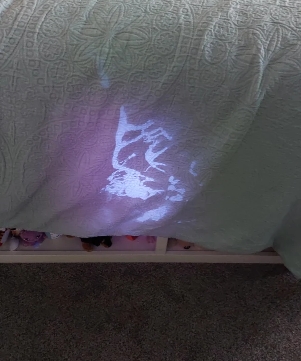The post FAQs About UV Flashlights in Crime Scene Investigations appeared first on Tank007.
]]>1. What Is a UV Flashlight, and How Does It Work?
Answer:
A UV flashlight emits ultraviolet light—a type of electromagnetic radiation with wavelengths shorter than visible light but longer than X-rays. It causes certain substances to fluoresce (emit visible light) when exposed to UV rays, making them visible to investigators.
Common UV Wavelengths Used:
| Type | Wavelength (nm) | Application |
|---|---|---|
| UV-A (Longwave) | 320–400 nm | Bodily fluids, fingerprints, and fibers |
| UV-B (Midwave) | 280–320 nm | Less common, some biological traces |
| UV-C (Shortwave) | 100–280 nm | Fibers, bones, older evidence |
Key Insight: UV-A light is the most widely used in forensic investigations due to its balance of safety and effectiveness.
2. What Evidence Can UV Flashlights Detect?

Answer:
UV flashlights can reveal a range of evidence types, including:
| Evidence Type | UV Light Wavelength | Explanation |
|---|---|---|
| Bodily fluids (blood, urine, saliva) | UV-A | Fluoresce due to proteins and other compounds |
| Fingerprints | UV-A | Detects oils and sweat residues |
| Fibers and hairs | UV-C | Causes bright fluorescence in synthetic materials |
| Bone fragments | UV-C | Detects phosphorus and calcium content |
| Security markings | UV-A | Reveals hidden inks and dyes used for authentication |
Pro Tip: Use a 365 nm UV flashlight for optimal results in crime scenes.
3. Are UV Flashlights Safe to Use?
Answer:
While UV-A light is relatively safe, prolonged exposure can cause skin and eye damage. Here are some safety tips:
- Wear protective glasses rated for UV protection.
- Limit exposure time to UV light sources.
- Avoid direct eye contact with the beam.
Comparison of UV Safety Risks:
| Type of UV Light | Health Risk Level | Recommended Protection |
|---|---|---|
| UV-A | Low to moderate | Safety glasses and gloves |
| UV-B | Moderate | Full-face shield and protective clothing |
| UV-C | High | Complete skin and eye protection required |
4. How Do You Choose the Right UV Flashlight for Investigations?
Answer:
Consider these factors when selecting a UV flashlight:
| Factor | Recommendation |
|---|---|
| Wavelength | 365 nm for crime scenes |
| Light Intensity | 1,000–2,000 mW for adequate fluorescence |
| Battery Type | Rechargeable lithium-ion for longer use |
| Material | Anodized aluminum for durability |
Pro Tip: Choose a flashlight with adjustable focus to switch between wide and narrow beams for different evidence types.
5. Can UV Flashlights Detect Blood Even After Cleanup?

Answer:
Yes, but with limitations. Hemoglobin in blood can fluoresce under UV light, even after attempts to clean it. However, strong cleaning agents can reduce fluorescence. For more accuracy, luminol or fluorescein combined with UV light is recommended.
Effectiveness of UV Light on Cleaned Blood:
| Cleaning Method | UV Detection Success | Recommended Approach |
|---|---|---|
| Basic cleaning (soap) | High | UV-A light (365 nm) |
| Bleach cleaning | Medium | Luminol test with UV light |
| Industrial cleaners | Low | Alternate chemical tests needed |
6. How to Maintain and Care for a UV Flashlight?
Answer:
To ensure long-lasting performance:
- Clean the lens regularly with a microfiber cloth.
- Store in a dry place to prevent moisture damage.
- Check battery contacts for corrosion.
Maintenance Checklist:
| Task | Frequency |
|---|---|
| Clean lens | After each use |
| Check batteries | Monthly |
| Inspect for cracks or damage | Quarterly |
Conclusion
UV flashlights are powerful tools in forensic investigations, capable of uncovering hidden evidence quickly and effectively. By understanding their types, uses, and maintenance needs, you can maximize their potential in crime scene analysis.
The post FAQs About UV Flashlights in Crime Scene Investigations appeared first on Tank007.
]]>